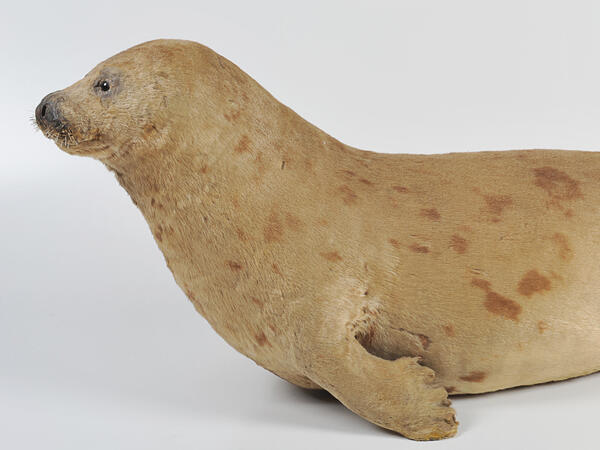Until recently, three families—walruses, eared seals, and real seals–were classified as pinnipeds (Pinnipedia). However, genetic and biochemical studies have shown that seals are more related to predators — wolves, martens, bears — so scientists placed them in the systematic order Carnivora. The terms ‘pinnipeds’ and ‘marine mammals’ continue to be used for seals to emphasize the peculiarities of their morphology and ecology.
The Caspian seal, or Caspian ringed seal, is endemic to the Caspian Sea. It is found only in this territory and nowhere else. The Caspian seal is the smallest among the family of real seals (Phocidae). Its body length is 120–148 centimeters, and its weight is from 50 to 60 kilograms.
The front and rear flippers make seals fast and agile swimmers. In the water, they hunt fish, most often sprat, less often they feed on crustaceans. On land, seals are quite clumsy, since they cannot turn up their hind flippers and use only the front ones for movement, dragging the rear part of the body behind them.
At the same time, unlike whales and dolphins, seals regularly come ashore. On the ground or the ice, they breed and rest. At the end of January—beginning of February, the females of the Caspian seal come to the breeding grounds on the ice and give birth to one calf each. In addition, at the end of May, the seals gather again in large clusters for molting in molting deposits.
The cubs of the Caspian seal are covered with soft white fur for up to three weeks. Whitecoats are called ‘belyok’ in Russian (from Russian ‘white’).
Since the Caspian seal was a commercial species, until recently it was hunted in large quantities, and in some years they hunted exclusively for whitecoats. Today, the number of seals has decreased almost 10 times compared to the beginning of the 20th century, when up to a million of species lived in the Caspian Sea.
The International Union for Conservation of Nature has included the Caspian seal in the list of endangered species. Both hunting and oil and pesticide pollution of the Caspian Sea, which reduces the animals' immune response to infectious diseases, are cited as the reason for the catastrophic decline in numbers.
In addition, it has become more difficult for Caspian seals to breed due to climate change: in warm winters, there is not enough ice they need for the breeding grounds.
The Caspian seal, or Caspian ringed seal, is endemic to the Caspian Sea. It is found only in this territory and nowhere else. The Caspian seal is the smallest among the family of real seals (Phocidae). Its body length is 120–148 centimeters, and its weight is from 50 to 60 kilograms.
The front and rear flippers make seals fast and agile swimmers. In the water, they hunt fish, most often sprat, less often they feed on crustaceans. On land, seals are quite clumsy, since they cannot turn up their hind flippers and use only the front ones for movement, dragging the rear part of the body behind them.
At the same time, unlike whales and dolphins, seals regularly come ashore. On the ground or the ice, they breed and rest. At the end of January—beginning of February, the females of the Caspian seal come to the breeding grounds on the ice and give birth to one calf each. In addition, at the end of May, the seals gather again in large clusters for molting in molting deposits.
The cubs of the Caspian seal are covered with soft white fur for up to three weeks. Whitecoats are called ‘belyok’ in Russian (from Russian ‘white’).
Since the Caspian seal was a commercial species, until recently it was hunted in large quantities, and in some years they hunted exclusively for whitecoats. Today, the number of seals has decreased almost 10 times compared to the beginning of the 20th century, when up to a million of species lived in the Caspian Sea.
The International Union for Conservation of Nature has included the Caspian seal in the list of endangered species. Both hunting and oil and pesticide pollution of the Caspian Sea, which reduces the animals' immune response to infectious diseases, are cited as the reason for the catastrophic decline in numbers.
In addition, it has become more difficult for Caspian seals to breed due to climate change: in warm winters, there is not enough ice they need for the breeding grounds.


